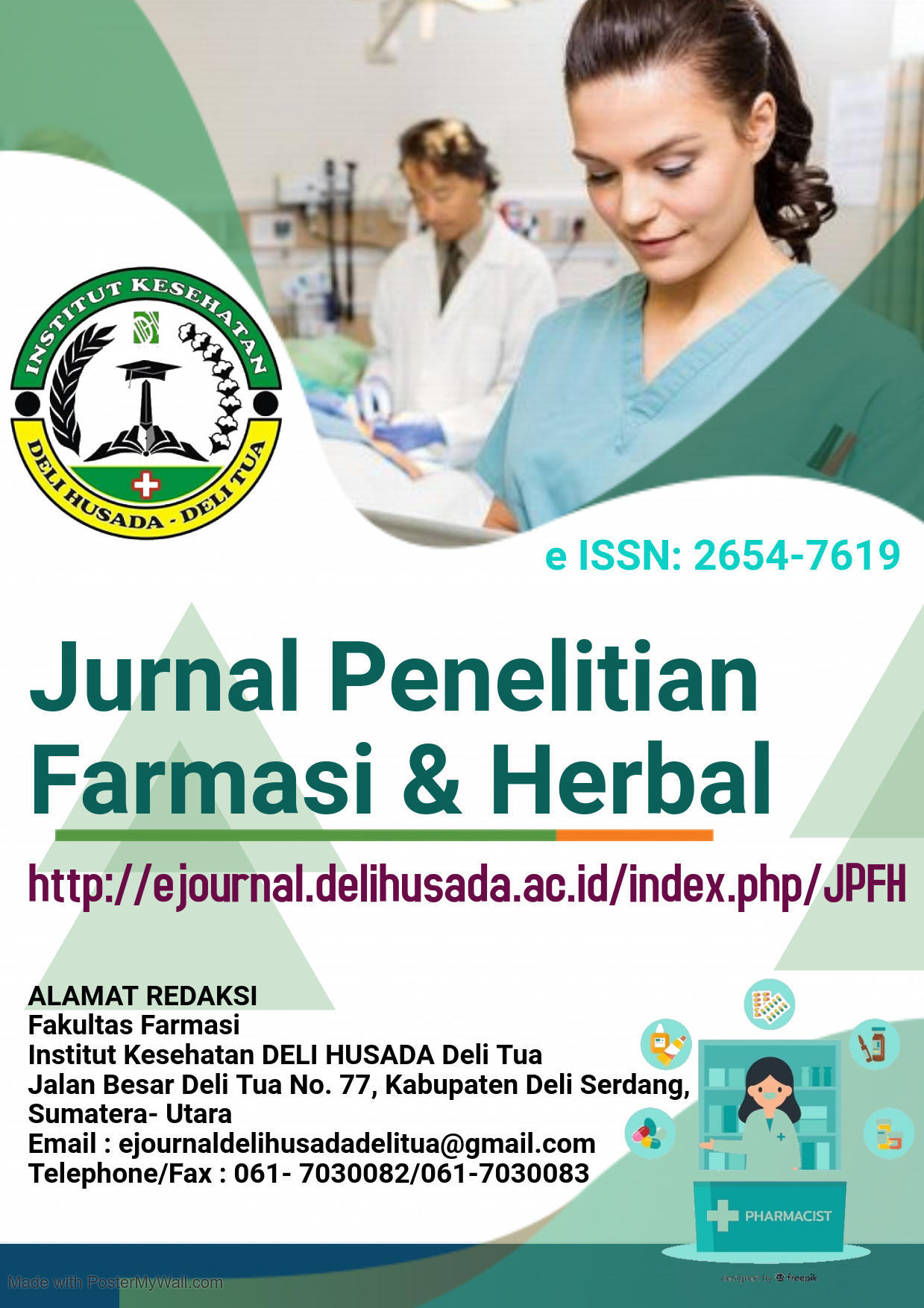IDENTIFIKASI KADAR GLUKOSA DAN SUKROSA PADA MADU HUTAN
Abstract
Abstract
Glucose and sucrose tests are performed as one of honey’s standard quality. Meanwhile the process of honey production by bees itself is a complex process, so there is a high probability of differences in the levels and composition of glucose and sucrose among the types of honey circulating in the community. The composition of glucose and sucrose of each honey can affect its efficacy mainly when it is used for treatment process. The aim of this research is to know glucose and sucrose level in forest honey and compare it with honey’s standard quality according to Indonesian national standard (SNI 01-3545-2013). The samples were 3 forest honey from different village. Sample A is forest honey from Kubu Simbelang Village, Sample B from Bunuraya Village, and Sample C from Suka Village, Tigapanah District. The determination of glucose and sucrose levels was performed by Luff Schoorl method. The result of this study was glucose average level of each sample A, B and C is 71,42%, 66,24%, and 71,21%. The sucrose average levels of sample A, B, and C is 3,09%, 4,51, and 3,04%.It can be stated thatall forest honey used in this study has fulfilled the requirements according to SNI 01-3545-2013 which set that glucose level of honey must be at least 65%while the sucrose level is maximum 5%.
Downloads
References
Badan Standarisasi Nasional.(2014). Madu SNI 01-3545-2013. Jakarta : Badan Standardisasi Nasional.
Dharmestiwi, K.I., (2007). Perkembangan Produksi Madu Lebah Hutan (Apis dorsata) Di Kawasan Gunung Tampomas Utara, Kabupaten Sumedang. Skripsi. Institut Pertanian Bogor
Gaman,P., dan Sherrington,K. (1981). Ilmu Pangan, Pengantar Ilmu Pangan, Nutrisi, dan Mikrobiologi. Yogyakarta: Gadjah Mada University Press Halaman 59-64
Iswari, R dan Yuniastuti, A. (2006).Biokimia. Yogyakarta:Graha ilmu Halaman 16
Kementrian Kesehatan Republik Indonesia.(2014). Farmakope Indonesia edisi V. Kementrian Kesehatan RI. Jakarta.
Masun, MS. (2005). Jeli Memilih Madu. Adicitia.Yogyakarta.
Rosita.(2007). Berkat Madu Sehat, Cantik, dan Penuh Vitalitas.Qanita. Bandung.
Sarwono, B. (2001). Lebah Madu. Jakarta: Agromedia Pustaka. Halaman 61-63.
Sihombing, D.T.H. (1997). Ilmu Ternak Lebah Madu. Yogyakarta: Gadjah Mada University Press. Halaman 35; 100-102.
Sudarmadji. (1996). Analisa Bahan Makanan dan Pertanian. Yogyakarta: Liberty Yogyakarta. Halaman 80-81.
Sumoprastowo dan Agus S. (1993). Beternak Lebah Madu Modern. Jakarta: Penerbit Bhratara. Halaman 54.
Winarno, F.G. (1981). Madu Teknologi, Khasiat dan Analisa. Bogor: Pusbangtepa. Halaman 25-26







